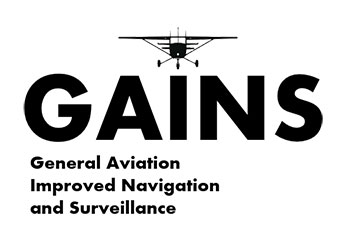
The GAINS project has moved one step closer to demonstrating that general aviation (GA) is able to fly instrument procedures with radius-to-fix (RF) legs, thanks to strong collaboration with EASA and the manufacturing industry, who worked together to clear the way for existing avionics to be used.
GAINS – General Aviation Improved Navigation and Surveillance, a SESAR project is validating concepts enabled by Global Navigation Satellite System (GNSS) and EGNOS targeting general aviation. The project is part of SESAR’s strategic vision of ensuring the integration of general aviation into the future system.
A key technical enabler for this is the ability of GA aircraft avionics to use RF legs, which are curved paths flown with precision using GNSS navigational guidance. In the past, RF legs were only viable for airliners equipped with expensive avionics. Today, most GA aircraft using performance-based navigation in Europe have much more affordable avionics. However, until February 2019, EASA still required that RF leg capability be disabled these devices. This was a barrier to large-scale navigation demonstrations for GAINS.
Following meetings with the GAINS team in early 2019, EASA worked closely together with one of these manufacturers to enable the use of GTN-series navigators to fly RF legs. On 8 March 2019, the first aircraft registered in an EASA member state with this modification was released to service, and it will take part in the GAINS navigation demonstration flights.
By testing flights with a broad variety of GA equipment, GAINS will demonstrate the ability of GA to employ new technology and procedures in flight, and also test the viability of adapting SESAR solutions to improve GA’s operations and integration within a variety of operational contexts and environments. This should contribute to better GA integration at controlled and uncontrolled aerodromes, as well as improving safety, efficiency and predictability of operations.
This two-year project is overseen by a consortium that includes representatives from the general aviation (GA) community: AOPA UK, Pildo Labs, Funke Avionics and Trig Avionics. Aviation consultancy Helios (an EGIS company) is the project coordinator.
This project has received funding from the SESAR Joint Undertaking under the European Union's Horizon 2020 research and innovation programme under grant agreement No 783228
